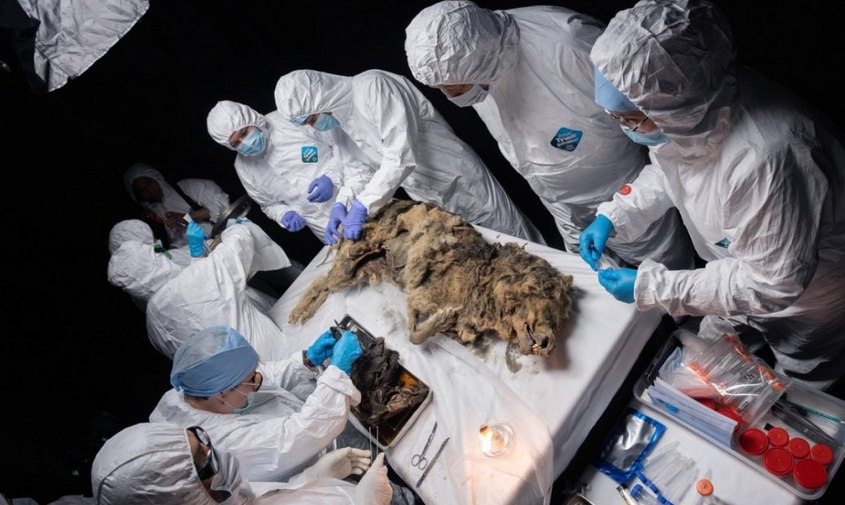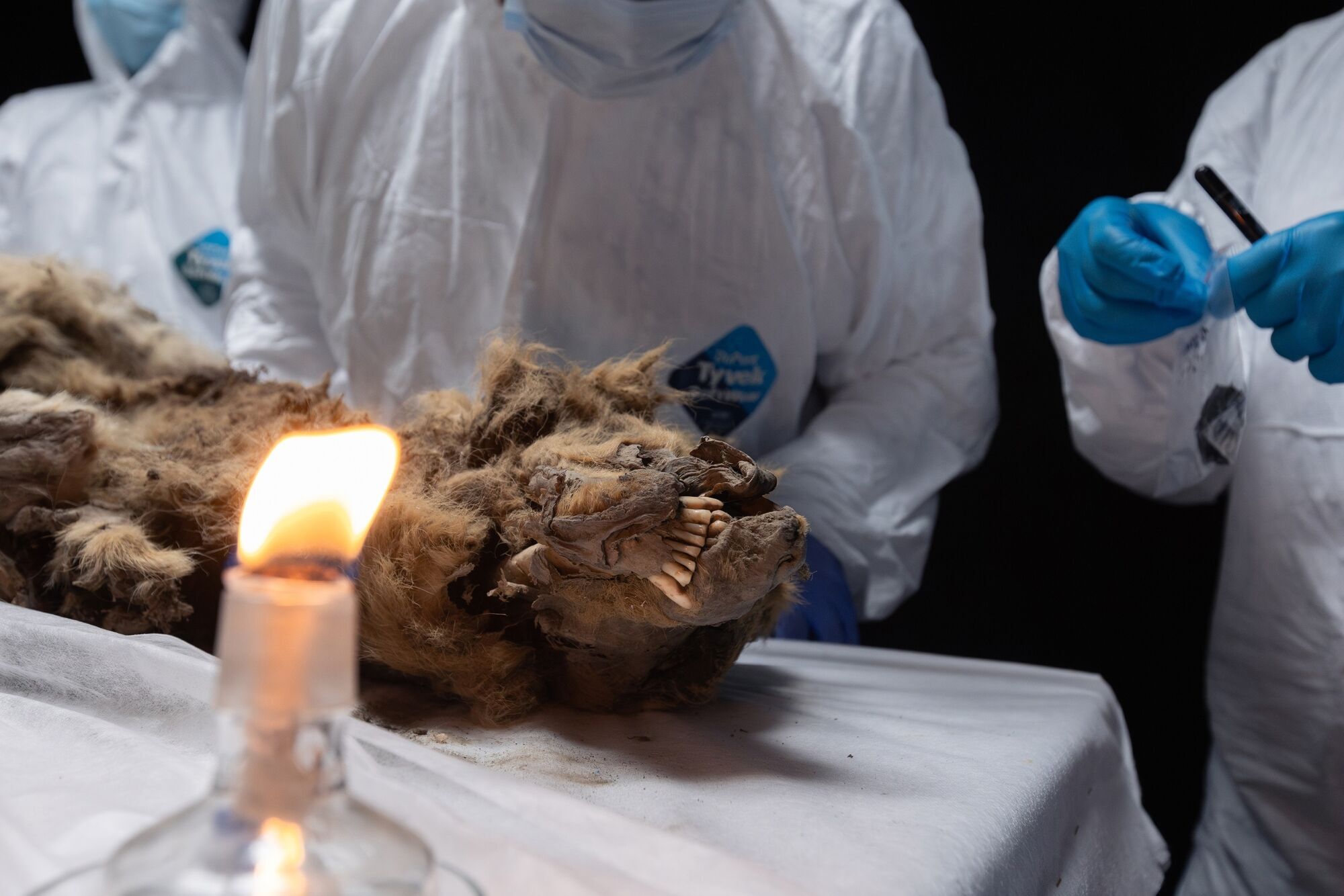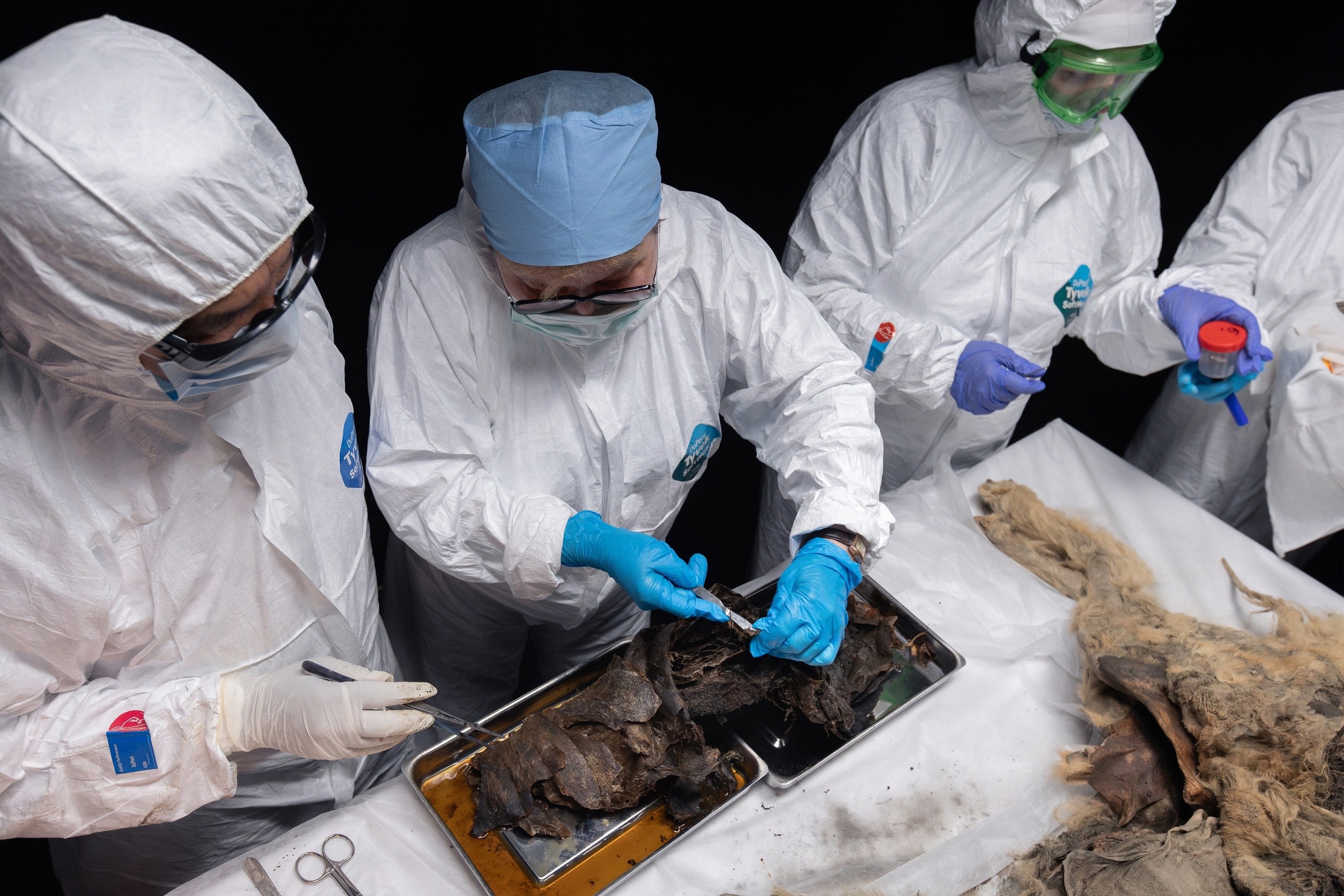Sun 30 June 2024:
Ancient wolf in permafrost is world’s first discovery of Pleistocene predator, found by residents in Yakutia region.
Russian scientists are conducting an autopsy on a wolf carcass that has been frozen in permafrost for approximately 44,000 years, marking a groundbreaking find. The wolf was discovered by residents in Yakutia’s Abyysky district in 2021 and is now being thoroughly examined by scientists.
“This is the world’s first discovery of a late Pleistocene predator,” said Albert Protopopov, head of the department for the study of mammoth fauna at the Yakutia Academy of Sciences. “Its age is about 44,000 years, and there have never been such finds before.”

Yakutia, a vast region in Russia’s Arctic far east, is covered in permafrost and experiences extreme winter temperatures, sometimes dropping to minus 64 degrees Celsius (-83.2 degrees Fahrenheit).
“Usually, it’s the herbivorous animals that die, get stuck in swamps, freeze and reach us as a whole. This is the first time when a large carnivore has been found,” Protopopov noted. He added that while finding ancient animal carcasses in permafrost is common, the wolf is unique. “It was a very active predator, one of the larger ones. Slightly smaller than cave lions and bears, but a very active, mobile predator, and it was also a scavenger,” he explained.

Artyom Nedoluzhko, development director of the paleogenetics laboratory at the European University at Saint Petersburg, highlighted the significance of the find. “The main goal is to understand what this wolf fed on, who it was, and how it relates to those ancient wolves that inhabited the northeastern part of Eurasia,” he said.
Sandwiched between the Arctic Ocean and in Russia’s Arctic far east, Yakutia is a vast region of swamps and forests, about 95 percent of which is covered in permafrost.

Winter temperatures in the region have been known to drop to as low as minus 64 degrees Celsius (-83.2 degrees Fahrenheit)
“Usually, it’s the herbivorous animals that die, get stuck in swamps, freeze and reach us as a whole. This is the first time when a large carnivore has been found,” said Protopopov.

While it’s not unusual to find millennia-old animal carcasses buried deep in permafrost, which is slowly melting due to climate change, the wolf is special, Protopopov said.
“It was a very active predator, one of the larger ones. Slightly smaller than cave lions and bears, but a very active, mobile predator, and it was also a scavenger,” he added.

For Artyom Nedoluzhko, development director of the paleogenetics laboratory at the European University at Saint Petersburg, the wolf’s remains offer a rare insight into the Yakutia of 44,000 years ago.
“The main goal is to understand what this wolf fed on, who it was, and how it relates to those ancient wolves that inhabited the northeastern part of Eurasia,” he said.
SOURCE: INDEPENDENT PRESS AND NEWS AGENCIES
______________________________________________________________
FOLLOW INDEPENDENT PRESS:
WhatsApp CHANNEL
https://whatsapp.com/channel/0029VaAtNxX8fewmiFmN7N22
![]()
TWITTER (CLICK HERE)
https://twitter.com/IpIndependent
FACEBOOK (CLICK HERE)
https://web.facebook.com/ipindependent
YOUTUBE (CLICK HERE)
https://www.youtube.com/@ipindependent
Think your friends would be interested? Share this story!





